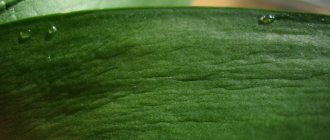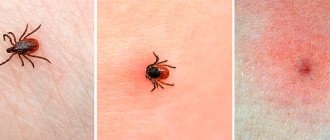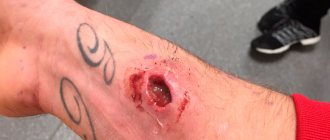4081Pavel
Due to hunting instincts, pets, when in the wild, often become victims of attacks by bees, hornets, wasps and some types of spiders. The reaction of a cat's body to the bite of stinging insects is unpredictable, since animals, like humans, are prone to allergies. If a cat was bitten by a wasp on the paw or back, then such bites may not be noticed by the owners of adult animals. These places are the least sensitive and the cat can cope with the problem on its own. In mild cases, inflammation and unpleasant itching go away within a few hours, and pain from touching the bite site lasts no more than two to three days.
If a wasp stings a kitten or an adult cat with increased susceptibility to insect venoms (Persian, British, Angora breeds), then in this case there is a possibility of death after the bite. Even if the bite fell on the least sensitive part of the body, it is worth considering that even a small portion of poison can provoke serious intoxication of the body.
© shutterstock
The symptoms of an allergic reaction are as follows::
- dyspnea
- vomit
- chills
- movement coordination disorders
- increased salivation
- hives
- convulsions
- in the most severe cases shock may occur
Every breeder or hobbyist should know a plan of action if the condition of an animal affected by a wasp sting worsens. If any of the above signs of an allergic reaction occur in your cat, you should immediately show it to a veterinarian. Experts in the field of veterinary medicine categorically do not recommend relying on your own experience or advice from numerous articles. Since each animal has an individual reaction to medications, the veterinarian monitors the cat for some time after their administration.
If a wasp bites you on the face, head or throat, there is a high probability of swelling spreading to the respiratory tract, which in turn provokes suffocation. A bite to the eye or nose is no less dangerous; such wounds are not without severe inflammation, which is fraught with suppuration of the mucous membrane and other complications.
If a wasp bites a cat on the stomach or groin, this can lead to swelling of the urinary tract. In this case, it is necessary to immediately get rid of the swelling by contacting a specialist, otherwise blockage of the urinary tract can lead to death.
For any animal, be it a cat or a dog, multiple stings from wasps or other stinging insects can have serious consequences. In this case, you should immediately contact a veterinary clinic.
What danger do insect bites pose to cats?
For young and inexperienced cats, wasps and other large insects are of great interest as objects for play.
The animals are very mobile and will happily chase an insect, trying to catch it with their paws. Not surprisingly, such fun often leads to bites. If a cat is bitten by an insect, you need to pay attention to which part of the body the damage occurred. The safest place is a bite on the paw or the back of the body. As a rule, a healthy animal is able to cope with the problem on its own, and the owner’s help is not required. Even if there is swelling on the paw that interferes with walking, the cat should not be disturbed; everything will go away within 2-3 days.
More dangerous are situations when the bite occurs in the head and throat of the animal. If poison enters the bloodstream near the cat's face, nose, or mouth, it can cause widespread swelling in the airways, resulting in suffocation.
You should be especially careful about bites to the eyes. Such damage is fraught with serious complications and can cause the development of inflammatory processes and suppuration.
Stinging insects pose a serious danger to animals suffering from allergies. If a cat has increased sensitivity to insect venom, the likelihood of death after a bite is quite high. 2-3 bites can cause severe intoxication in the animal’s body and, as a result, death.
What danger do bites pose?
Very often, wasps, when attacking a cat, sting the pet’s paw pads and bite the cat’s mouth. Other parts of the body rarely suffer from bites, since the cats’ torso is protected by fur. If a cat was bitten by a wasp on the paw or body, then stinging in such places does not pose a threat to health.
Pain syndrome and other unpleasant symptoms disappear within 3-4 hours. But sometimes the owner may not notice that his animal has been bitten by a wasp.
It cannot be ruled out that the cat was attacked by a wasp. In the case of an initial sting, the body’s reaction to what happened is unknown. It is necessary to conduct special monitoring of the cat’s condition if:
- the wasp bit the cat on the nose, head, throat, muzzle, lip. This leads to the development of swelling, which will disperse along the path of breathing. The possibility of dying from suffocation in such a situation is high;
- when an insect bites in the genital or groin area, this threatens to block the urinary tract;
- if an insect bites a pet in the eye, then the pet cannot avoid the development of suppuration, inflammation, and sometimes blindness;
- The cat has hypersensitivity and allergies.
When a kitten is stung by a wasp or bee, even a small dose of poison is enough to cause intoxication and lead to the death of the animal.
bite hazard
There are cat breeds that are susceptible to allergies:
- British;
- Persian;
- Angora.
Animals that have suffered a massive wasp attack are especially at risk, as well as cats with chronic diseases who have recently undergone surgical treatment. There have been cases where long-haired cats also do not tolerate wasp venom well.
In the case of any of the reasons, it leads to angioedema, anaphylactic shock, and it is important to immediately provide help or go to a veterinary clinic.
Bite symptoms
A person cannot always notice when a cat has been bitten by a wasp. You can suspect an attack by the pet’s behavior and appearance. The animal meows pitifully, tries to lick and bite the sore spot. Upon examination, a red spot, swelling, and scratches from the cat’s attempts to scratch the sore spot are found on the skin.
The wasp injects poison with its sting, which provokes severe swelling. The degree of inflammation depends on the age of the pet and the location of the bite. Swelling is more severe in kittens when poison gets into the muzzle area - nose, cheek, eye.
The symptoms when a cat is stung by a wasp are no different from those in humans. Normal body reaction:
- redness no more than 10 mm in diameter;
- edema;
- burning;
- pain;
- after a few hours itching.
The presence of a strong allergic reaction after a wasp attack can be determined by external signs on the skin, systemic:
- severe swelling;
- redness over 1 cm in diameter;
- additional rash;
- incessant itching;
- increased salivation;
- lacrimation;
- breathing problems, lack of air;
- swelling of the larynx;
- diarrhea;
- weakness;
- increased body temperature;
- vomit;
- convulsions;
- lack of appetite.
Allergy symptoms in cats may disappear on their own after a few days, but there is a possibility of a severe reaction involving the respiratory organs in the pathological process. Swelling of the larynx occurs in a few minutes, the cat dies without emergency assistance.
On a note!
Manifestations of allergies in a cat, cats appear immediately after a bite, the immune system reacts to damage to the skin, ingestion of poison instantly. A severe allergic reaction appears within 5-20 minutes. At this time, you need to observe the animal in order to quickly respond to the situation if necessary.
Chills
Chills are one of the most common signs of a bite. The poison causes muscle spasms and the characteristic signs of a spasm can be seen by the movements of the animal.
In this case, the tail may not move at all or may be overly excited with movements that were previously unusual for it. The animal can also quickly open and close its mouth wide.
Swelling
In most cases, the swelling can only be seen if the bite is on the face.
Most often, wasps sting cats on the nose, which is why the affected area really increases in size and is difficult not to notice. In other cases, palpation is unlikely to quickly determine the location of the attack. Unless you can observe where the animal is trying to reach in an attempt to lick the wound.
Increased salivation
The most characteristic symptom, which is difficult to confuse with something else, is increased salivation or, in human terms, salivation.
If an animal is drooling, there is no need to rush to conclusions about rabies. Firstly, it’s worth looking for other symptoms, and secondly, in any case, here is a direct route to the veterinarian.
Other
In addition to inappropriate behavior, spasms, salivation, swelling and itching at the site of the bite, the animal experiences an increase in temperature (the nose becomes dry and hot), tears flow, and if the bite falls on the paw, it is painful for the animal to lean on it. There are also cases when cats begin to vomit or the animal breathes heavily.
Often stung patients have a slight loss of coordination, this is especially noticeable in cats. Much more severe, but you can still notice that the cat has an increased heart rate and a state of shock.
Separately, it is worth highlighting the symptoms of anaphylactic shock, when a pet requires emergency assistance from specialists. If a strong allergic reaction occurs, the animal begins to persistently rub its eyes, meow strangely, breathe very heavily and frequently (this will be visible by the movement of the chest), wheezing can be heard, and the mucous membranes acquire a blue tint.
Important! If you do not have time to take action in time for anaphylactic shock, a spasm in the bronchi will soon block the airways and the pet will simply suffocate.
Symptoms and complications depending on the location of the bite
Different parts of the body may experience different symptoms. So, if the bite was on the paws, then it can be detected by the animal’s limp.
Nose
A bite in this place is easy to detect, since the nose of the mustachioed-striped one instantly turns red and swells. If detected, it is better to immediately begin therapy with antihistamines. If help is not provided on time, at best the animal will have difficulty eating. At worst, swelling can spread to the nasal mucosa and cause suffocation.
Lip
When bitten on the lips, the cat's face swells, making its features disproportionate. The lip protrudes, the animal tries to press its muzzle to the ground in an attempt to get rid of the sting.
Cheeks
Stung cheeks become very swollen. The swelling may spread to other parts of the face or neck. With a strong reaction, the cat’s coordination of movements is impaired.
Language
When this organ is damaged, the cat develops shortness of breath, vomiting, and increased salivation. Help must be provided immediately to prevent swelling of the nasopharynx.
Eyelids and eyes
Bites to the area around the eyes can lead to serious complications, including loss of vision. An allergic reaction is manifested by swelling and inflammation.
Groin area
In this case, severe swelling is observed in the area of the urinary organs. If help is not provided in time, the swelling will block the ducts, and the animal may die from bladder overflow.
How to find bite sites?
It is quite difficult to detect a stung area of the body. This happens due to the fact that the cat does not give in to hands, hisses and scratches. Therefore, you need to monitor the behavior of the animal and notice parts of its body in which changes have occurred.
Nose
The bite mark can be easily seen as the nose becomes swollen and red. It is recommended to carry out therapy to reduce the allergic process in the animal. If your pet is stung on the nose, he will not be able to eat normally. In addition, complications often arise that can spread to the respiratory tract.
Cheek
If insect venom gets into the cheek area, it will swell. There is a chance that the swelling will spread to other parts of the cat's face. In this case, the animal will feel chills, become weak, the heart rate will increase, and there will be difficulty breathing. In addition, the cat will be disoriented.
Language
It is difficult to find out about a bite on the tongue, since there are no external signs. However, if severe salivation and vomiting are noticeable, we can conclude that the insect sting got into the pet’s mouth. This is a dangerous type of lesion because swelling of the nasopharynx may occur. In this case, you cannot hesitate. It is necessary to carry out therapy and show the cat to a veterinarian.
Lip
The cat's face swells, the lip usually protrudes, and the features look unnatural. In such a situation, the animal leans against cold objects and tries to reduce the pain. To help your pet, you need to apply compresses. They constrict blood vessels and stop the spread of poison.
Finding the bite site
Locating a sting point can be challenging. The cat becomes active, aggressive, hisses, scratches, bites.
You should monitor your pet's behavior. If the lesion is on the muzzle - swelling is noticeable, in the paw - lameness, the cat will constantly lick or tear other points on the body with its claws.
Nose
The insect bite is often visible and clearly marked by redness. When initial symptoms occur, immediate treatment is required to reduce the allergic reaction in the cat.
If a wasp, bee or bumblebee sting occurred on the nose, but your cat was not given timely help, the resulting swelling will prevent the animal from eating normally. With significant complications, the latter can spread to the respiratory tract and lead to suffocation.
Cheek
When a bee stings your cat in the cheek area, swelling of the latter is observed, with the swelling possibly spreading to other parts of the body.
If affected, the pet shows weakness, develops chills, increased heart rate, wheezing and difficulty breathing. A cat’s body’s strong reaction to a wasp sting manifests itself in failures of its coordination.
Lip
This fact is easy to detect - the animal’s muzzle swells greatly, the lip protrudes, and the features become disproportionate. The cat leans against the cold wall, the ground, trying to calm the pain and get rid of the sting.
If a wasp has bitten your cat directly on the lip, then applying lotions is useless, just like using ointments. They will be licked off along with saliva and end up inside the stomach. Compresses must be used. To do this, use ice wrapped in a thin cloth. Compresses will help constrict the blood vessels, thereby preventing further spread of insect venom. The pain effect and swelling gradually decreases.
Language
You can find out that your cat has been bitten by a poisonous bee on the throat or tongue not only by noticeable shortness of breath - severe swelling, vomiting, and excessive salivation occurs. This is one of the most dangerous types of toxin damage, accompanied by swelling of the nasopharynx.
You cannot hesitate for a second; it is better to immediately help your pet by providing intensive therapy with special medications available at home.
How to give a cat an injection yourself
As described above, in many cases the owner will have to give the cat an intramuscular injection himself. For many, it is a big problem to give an injection to a person, not to mention an unconscious animal. However, this must be done, and how to do this will be described below.
It all starts with choosing a syringe. For injections, you can use regular syringes, which are sold at the pharmacy. Since the dosage of drugs is usually limited to one standard ampoule, there is no point in taking a 10 cc syringe. A standard 2cc is best. If the injection is to be given to a kitten, then you can limit yourself to insulin. These syringes have the thinnest needles and the injection will be less painful.
Anyone can handle putting medicine into a syringe. It is important that there is no air in the syringe. After dialing, you can lightly press the plunger so that the medicine enters the needle and all the air comes out.
Next, you need to involve all your household or neighbors. It is advisable to wear thick clothing, as the animal is irritated and will protect its integrity.
The pet must be secured so that the middle of the thigh is open for the injection. You can pour alcohol over the injection site. Next, insert the needle. You don’t have to worry too much about the depth - 5-10 mm is the most optimal penetration depth.
Important! First you need to insert the needle to the required depth, quickly make sure that the injection is placed correctly and only then press the piston.
After fixing the position, slowly press down on the piston. There is no need to do this abruptly. Then carefully remove the needle from the animal’s body and treat it with alcohol again. If the animal lies obediently, you can apply cotton wool for a while.
A wasp or bee sting is quite dangerous for cats, especially very small ones. The danger is not so much the bite itself, but the allergic reaction that may follow it. Just like in humans, in cats it can be expressed by spasm and swelling of the airways. As a result, the animal may simply suffocate. To prevent this from happening, you must always keep it at home, and if this is an outing, take with you anti-allergenic and anti-inflammatory drugs. If your own skills to help a stung cat are not enough, you need to urgently take the animal to a veterinary clinic.
How can a wasp sting be dangerous for a cat?
In general, the symptoms of wasp bites in cats are very similar to those in humans. The main ones are:
- severe pain, further accompanied by itching;
- swelling or - sometimes - extensive swelling in the place where the wasp stung.
Pain and itching, no matter how severe they are, pose virtually no danger to the life of the cat - the owner does not need to do anything additional. Mild swelling will also go away on its own in most cases. The exception is severe swelling that can lead to blockage of the respiratory or urinary tract - such situations can be fatal for the animal.
Severe consequences are observed in cases where a wasp has bitten a cat that is hypersensitive to insect poisons. As a rule, after being stung, such animals begin to develop a systemic allergic reaction to one degree or another, which may be accompanied by symptoms such as:
- chills;
- vomit;
- severe shortness of breath;
- movement coordination disorders;
- shock (in especially severe cases).
It is also useful to read: Are wasp stings beneficial or, conversely, harmful to human health?
Having such a special animal in his home, the owner must clearly understand what needs to be done if the pet’s condition worsens after a wasp sting: if any signs of an incipient allergy appear, the cat should be taken to the hospital as soon as possible.
In this case, you should not rely on your own treatment experience and trust the advice of numerous articles - only a qualified specialist should prescribe medications to a cat, since all animals react differently to medications that seem harmless to humans.
Actions for allergies
If a cat is bitten by a wasp on the paw, nothing bad will happen. You just need to provide first aid and observe the pet’s behavior for an hour. The most dangerous consequences from an attack are in the muzzle area. If you are bitten on the nose or lip, the risk of severe swelling increases. Within a few minutes, the larynx swells, which interferes with the flow of air. In this case, immediate administration of adrenaline and an antihistamine solution is required.
If you are bitten in the eye or cheek, you should immediately give your pet an antiallergic drug in the form of tablets or drops. They use drugs for people - Claritin, Suprastin, Diazolin, Fenistil, ElCet. The medicine must be given to the victim if the wasp has bitten a kitten of different ages. The very first bite in his life is dangerous, since there are no antibodies to the poison in his blood, as well as the second. The risk of developing an allergy increases when the allergen enters the bloodstream again.
To eliminate a local allergic reaction, use antiallergic, antihistamine ointments or preparations based on natural herbal ingredients if the allergy is mild.
On a note!
Don't panic if your cat eats a wasp. An animal may swallow an insect during play. It doesn't sting in the stomach. A bite while in the mouth is determined by the condition of the tongue; if it does not swell, everything is fine. Otherwise, you need to give your pet an antihistamine.
Photos of animals that were bitten by a wasp are presented below. The severity of allergy symptoms directly depends on the individual characteristics of the body and the state of the immune system. Pedigree pets are prone to allergic reactions. Outdoor cats and male cats tolerate wasp stings without any problems. The sore spot will ache for a day and will begin to heal. If the Sphynx was bitten by a wasp or another short-haired pet, the help of antihistamines will be required.
Medicines that can be used to relieve symptoms and combat allergies
As mentioned above, the first thing the owner needs to do if a cat shows initial signs of general intoxication and allergies is to take the animal to a veterinary hospital without hesitation. Before a visit to the clinic, medications to eliminate symptoms and alleviate the pet’s condition are allowed to be used only after consultation with a doctor, at least by phone - otherwise the cat can be seriously harmed.
Symptoms of a wasp sting in a cat
When a wasp bites certain representatives of breeds with long hair, the swelling will not be noticed. The problem is identified by monitoring changes in the animal’s well-being.
- Anger appears.
- Aggressiveness.
- The cat does not allow its owner to come in and examine it.
- The pet meows pitifully.
aggression in cats
In addition to the signs of pain and itching, characteristic if a cat was bitten by a wasp, attention is drawn to those that indicate the development of an allergy.
- The presence of swelling, puffiness, where the cat was bitten by a bee.
- The appearance of shortness of breath, difficulty breathing.
- Sometimes development of vomiting.
- Increased salivation.
- Hyperthermia.
- The heart beats faster.
- The cat is shivering.
- A disorder in the coordination of movements is recorded.
- Shock appears.
- The animal loses its mind.
- Spasms appear.
If there is an assumption that a wasp has bitten and the cat’s health is deteriorating, you should take immediate action. In all situations, the help of doctors is important, who often use drugs that can slow down the formation of an allergic course and relieve swelling.
- Prednisolone.
- Dexamethasone.
- Cetrin.
- Diazolin.
Dexamethasone
It is difficult to give medications to your pet and calculate the dose on your own; if you make a mistake, you can cause serious harm to the animal. Therefore, in any situation, a doctor’s consultation is required.
First aid and treatment
You can help a cat that has been bitten by a wasp at home yourself. At the same time, it is important to know what to use in treatment, what medications will not harm the pet, and what will help him best in a particular case.
Examination of the wound
The site of the bite needs to be examined: the wasp extremely rarely leaves a sting in the wound, but if this happens, it must be carefully removed with tweezers without crushing it, otherwise even more poison will get into the wound.
Cold compress and wound care
The wasp can leave its sting in the bite area, which pulsates and delivers poison to the animal’s body. Therefore, at the very beginning of processing, you should get rid of the sting. It can be picked up with a regular needle or tweezers and removed like a splinter.
It is necessary to disinfect the affected area. To do this, you can use ammonia or any tincture that was created based on alcohol. It is necessary to moisten the cotton wool generously and wipe the sore area.
In addition to treating the wound, you need to apply a cold compress to the bitten area. This is necessary so that the swelling goes down faster. You can make a compress by wrapping pieces of ice or a cold product in a plastic bag and applying it to the affected area.
Pills
When the first symptoms of damage appear, many animal owners usually use homeopathic Apis tablets, a dosage of 2-3 pieces. The drug eliminates the risk of developing a reaction to wasp venom.
Experienced cat owners use Prednisolone in pill form. It is used at a rate of 0.5 – 1 mg per kilogram of pet’s weight. In addition to these substances, it is recommended to use corticosteroids, as they are anti-inflammatory drugs.
Ointments
To treat minor inflammation, you can use herbal substances in the form of ointments. Many people use Zvezdochka, Menovazin or Bepanten. For moderate inflammatory processes, Fenistil-gel can be used.
If the disease has developed and the symptoms have become more pronounced, you should use deep penetration ointments - Elok, Betamethasone or Advantan.
Inflamed skin areas need to be treated 3-4 times a day. As the swelling subsides, you can reduce the dosage. The treatment process itself lasts from 4 to 6 days.
It is recommended to purchase ointment after consultation with a specialist. The fact is that an incorrectly selected drug can reduce the cat’s immunity, which will lead to more serious consequences.
Priority actions in case of a bite
If a cat is bitten by a wasp, you need to provide first aid, which will help avoid deterioration of health, without causing harm to the pet’s body. To do this you should:
- Carefully examine the affected area of the body, if necessary, remove the sting with tweezers and try to squeeze out the poison.
- Treat the bite site with a disinfectant. It is recommended to wash the area with soapy water and apply a compress of baking soda and boiled water. You can apply a piece of ice wrapped in a cloth to the inflamed area - this will help relieve swelling.
- Give the animal an antihistamine, and if severe swelling occurs, a diuretic should be used.
- Provide your pet with peace and do not leave it alone until its condition normalizes or a doctor arrives.
You might be interested in: Poisonous plants for cats: how to help with poisoning?
It is important not to panic and start acting as soon as possible after the incident.
Folk remedies
To relieve itching and pain, you can use infusions of chamomile or calendula in the form of compresses. And also slices of lemon, apple, orange - natural acids partially neutralize the effect of the poison.
Can a cat do without help?
Most often, the cat’s body copes with wasp venom without consequences. If the bite is not on the head, throat or groin, the cat’s immunity, as a rule, gradually copes with the poison itself, and the swelling subsides after a few days.
Even if, for example, the stung paw has become twice as large due to swelling, this will go away in 3-4 days without any intervention from the cat owner or veterinarian.
Sometimes a sting is not accompanied by any symptoms at all. But even if the animal’s condition does not appear to have changed after a wasp sting, it is necessary to closely monitor its health in the first hours after the incident, since the reaction can be delayed.
Where do wasps sting cats most often?
If you suspect that your pet has been stung by a wasp, you need to carefully examine its body. An insect bite is not always accompanied by swelling, and swelling on the body of a long-haired animal may simply not be noticed.
Most often, a wasp stings a cat in the area of the mouth and pads of the front paws, because the animal tries to grab the insect with these parts of the body. Slightly less often, the wasp stings above the pads of the front paws and the muzzle.
Signs of anaphylactic shock
- weakness, unnatural behavior: the animal is lethargic or overly excited;
- vomit;
- mucous membranes are pale or bluish;
- breathing is difficult, wheezing is heard;
- the pulse quickens and becomes weak;
- cramps, involuntary urination.
Anaphylactic shock occurs in one animal in a thousand, but it can cause death. If a cat shows signs of anaphylactic shock after an insect bite, it is necessary to take the animal to the veterinarian as soon as possible. A cat can die within an hour if you don't give it help.
When to go to the vet
Answering the question - when should you go to the veterinarian, the only correct answer will be - always. The animal’s body requires a special approach, and when a cat is stung by a wasp, you need to go to the veterinary clinic as quickly as possible, because the procedures described above cannot guarantee that everything will be fine with the pet. In addition, the drugs listed may have their own side effects, not to mention that not everyone has the knowledge and courage to give their cat an injection.
Urinary incontinence in a cat: what to do at home
It is clear that visiting a veterinary clinic becomes mandatory when the bites are numerous, for example, when a cat is attacked by a flock of bees or wasps. Also, you shouldn’t waste your time if the cat is very young or still a kitten. The younger the animal, the more sensitive to poison.
Important! If you delay contacting a doctor, the animal may develop kidney failure due to the poison, and then saving the cat will be much more difficult and expensive.
Some situations will require full hospitalization. In the event of a strong reaction or a situation neglected by the owner, the veterinarian will have to install an incubation tube for the animal to feed its lungs with oxygen, while simultaneously injecting saline solution mixed with adrenaline to stop the attack. After this, the animal is given a Prednisolone drip, which will ease the bronchospasm.
After eliminating the allergic reaction, cats are usually left for a day under medical supervision.











